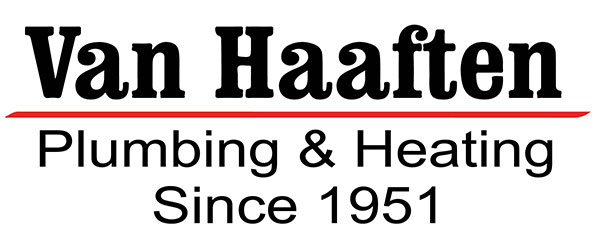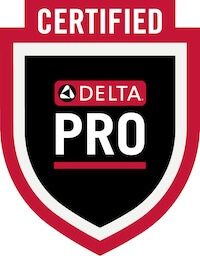
Picking out the proper furnace filter and changing it when it is dirty is as important to your HVAC system as changing the oil is to your car. Each plays a vital part in keeping its system operating safely, efficiently and for a long time.
A dirty furnace filter loses its effectiveness, allowing potentially harmful particles to move through your home. It also limits airflow, which can damage your furnace and reduce its life span.
Ensuring your furnace uses a clean filter that is appropriate for your needs is not only about keeping your furnace operating efficiently. It’s also about creating good indoor air quality for your home.
The quality of the air your family breathes is important to the heating pros at Van Haaften Plumbing & Heating. We've long focused on improving indoor air quality in Pella. Here, we’ve answered frequent questions about HVAC filters, including that especially tricky question of what direction do you point a filter in your furnace or air conditioner?
When to Replace the Air Filter in Your Furnace
It is important to replace dirty air filters in a furnace or air conditioner periodically. Dirt-clogged filters cause the system to worker harder than it should because it takes extra effort to move air through the plugged-up filter.
Officials advise checking your furnace filter every month and replacing it if it’s dirty. You’ll know if your filter needs changing because it will be gray or black from dirt or dust. People who have pets that shed will very likely want to replace their furnace air filter more often, because a quality air filter will trap pet hair circulating in a home.
Locating Your Furnace's Air Filter
In general, a furnace air filter is commonly located in the return air duct or blower compartment before the return air gets to the furnace. This makes sure air flowing into the system is filtered before it passes through the furnace components and is heated.
Depending on the type of furnace, the filter may be positioned on the right, left, bottom or in some cases, inside the furnace. It's usually housed within a slot, frame or cabinet for simple access and replacement. Always refer to your furnace's owner manual for information about filter location of your particular brand and model of furnace.
Is My Furnace Filter Just a Type of Air Filter?
The straightforward answer is, yes. In HVAC, a furnace filter and an air filter or AC filter are basically the same thing. While they might be called different things based on the current season— warm or chilly months—they are all filters that clean the air in your home.
They each eliminate dust, allergens, bacteria and other particulates from the air that is drawn into the furnace and air conditioning system, making certain the air distributed throughout your home is clean and safe.
What Is the MERV Rating System and What MERV Rating Should I Have?
Once you locate your old furnace filter and decide when it should be substituted for a clean one, it’s time to choose a replacement. That means determining the level of filtration that you need. One way to do that is by picking an appropriate MERV rating for your needs.
MERV stands for Minimum Efficiency Reporting Values. The MERV rating indicates the effectiveness of air filters at trapping airborne molecules. The rating scale ranges from 1 to 20, with greater numbers indicating a greater ability to filter smaller particles.
Experts say a filter with a MERV rating between 8 and 13 offers an appropriate balance between having healthy indoor air quality without overly restricting airflow. However, people with certain health conditions might need to use a filter with a higher MERV rating.
Where to Insert the Air Filter in a Furnace or Air Conditioner
Installing an air filter in a furnace or air conditioner correctly is important for the efficient operation of the heating or cooling system. Air filters are supposed to face a certain direction, indicated by an arrow written on the side of the filter frame. The filter should be put in with this arrow pointing in the direction of the furnace or air conditioner, which is the direction of the airflow. If you're doubtful about the airflow direction, try to remember that air always moves from the return duct towards the heat or cooling source. Therefore, be sure that the arrow points in the direction of the furnace or air conditioning unit.
Many people have difficulty remembering which direction to install an air filter. To help remember, consider taking a picture with your cell phone after the filter has been correctly installed by a professional. Or, you also could ask a technician to use a marker to write on the outside of your furnace which direction the filter should point. A handy time to inquire about this is during a routine furnace maintenance call.
How to Change a Furnace Air Filter
Switching out the filter on your furnace or air conditioner is a quick and easy process. Here is a step-by-step list of how to take out a dirty air filter and swap it for a new one:
- Turn off your furnace: Make a point to switch off your furnace before beginning the process.
- Locate the furnace filter: Typically, the filter is found inside the furnace or in the air return vent. Take note of which direction the arrow points on the filter, because you’ll want the arrow on the clean filter to point the same way.
- Slide out the old filter: Be diligent not to knock out any dust or debris.
- Note the date: Write down the date you replaced the filter on the new filter's frame. This will help you keep track of when it's time for you to change it again.
- Insert new filter: Put in the new filter with the arrow pointing in the direction of the furnace, which is the direction of airflow and should be the same direction the arrow pointed on your last filter.
- Secure the filter: Make sure the new filter fits securely and close any latches or clips that hold it in place.
- Turn on your furnace: Once the replacement filter is safely installed, you can turn your furnace back on.
Will a Dirty Air Filter Cause Problems for a Furnace?
The shortest answer is, yes, a dirty air filter can cause a furnace to quit working or limit its lifespan. Changing your furnace or air conditioning filter is one of the easiest things you can do to keep your system working correctly.



